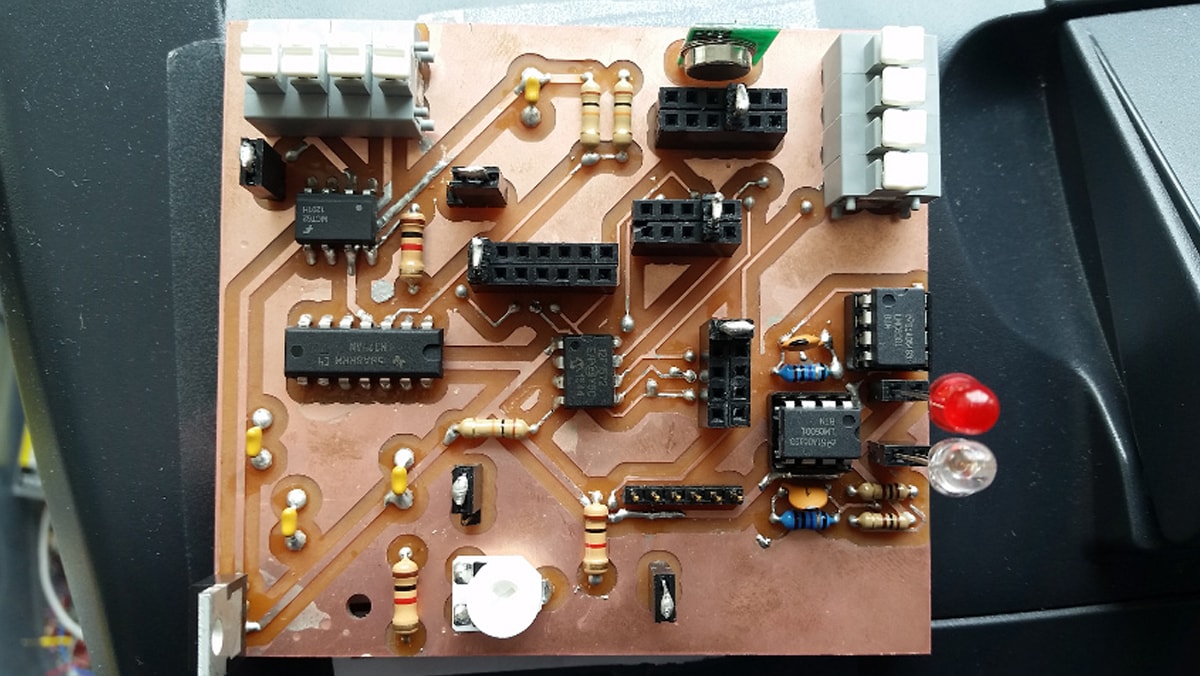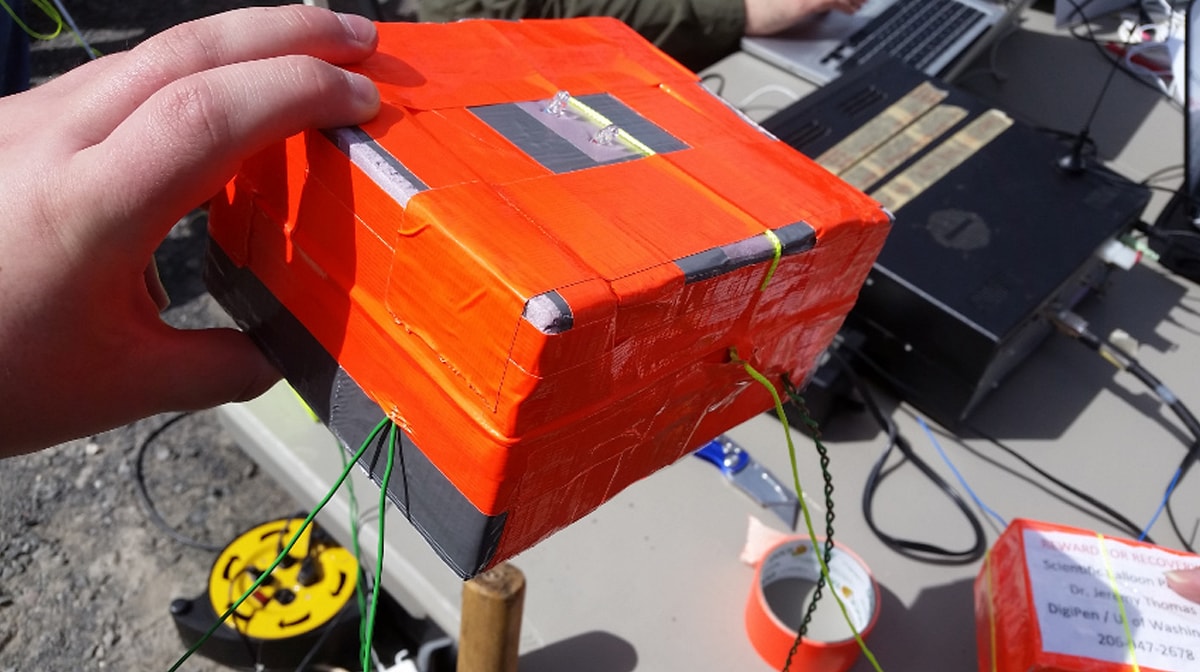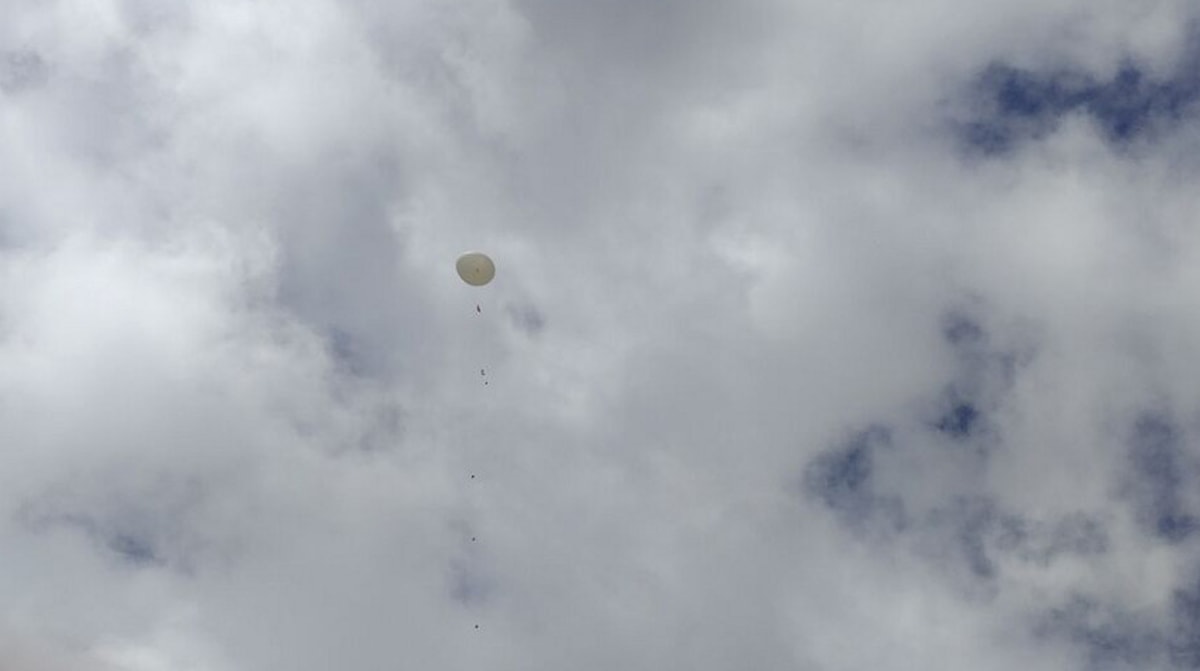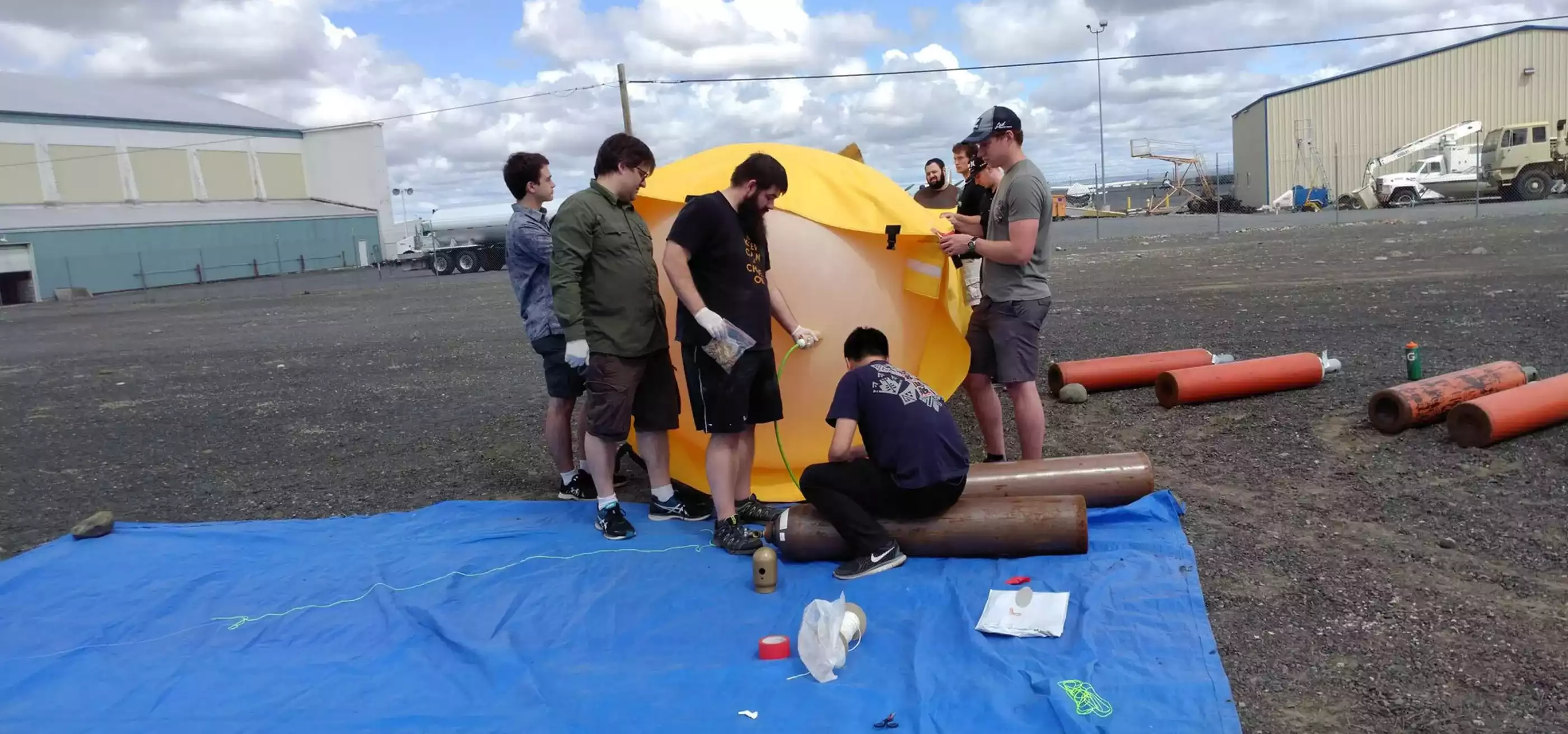In 2015, students from the Bachelor of Science in Computer Engineering program launched a high-altitude balloon into the atmosphere and recovered it. Now, three years later, the balloon project is still going strong.
This year, a new group of first-year students (Spencer Warren, Andrew Sentman, and Sean Morse) along with second- and third-year students (Ryan Price, Vincent Messina, and Cody Anderson) travelled to Eastern Washington with Dr. Jeremy Thomas to launch a balloon that they’d fitted with two scientific payloads. Each payload carried a different measurement tool, designed and built by the students to collect and transmit information in the extreme environment of the stratosphere.
One payload instrument was a compass similar to the one that operates on your cell phone. The other was a reverse-wired LED light sensor, which is capable of measuring very small amounts of light. While both payloads this year were measuring tools, Thomas says students can send a variety of projects up on the balloon.
“They either can measure something that changes or test an engineering principle — or try to send information,” Thomas says.

Last year, students even attempted to tap into the signal of a Seattle radio station, despite being all the way across the state. They didn’t quite succeed, Thomas says, but it’s an example of the type of ambitious project students tackle for the balloon test trip. The main idea of the trip is to encourage students to take a computer engineering project from start to finish, and to learn how to engineer things in a durable, thorough manner so that they’ll survive and function in extreme conditions.
And the conditions are certainly extreme. Last year’s balloon, according to Thomas, made it up to 110,000 feet, and this year’s balloon flew to about 88,000 feet. The balloon is purposely overinflated so that it will eventually pop and fall back to earth. A parachute deploys during the descent to prevent the payloads, which are also wrapped in protective material, from smashing on impact. The main challenge, Thomas says, is making sure the electric components hold up to the cold.
“What happens with solder is that it’s like welding. So if it changes temperature, it’s going to change those connections because of thermal expansion or shrinking,” Thomas says. “That could actually cause it to stop working. The electrical connection could be broken.”
The process of designing and building the payloads requires students to learn a variety of skills. This includes basic analog and digital circuit design of the sensors and firmware design for the onboard miniature computer, known as an embedded microcontroller. The microcontroller reads in the sensor data and outputs these data to a radio frequency transmitter capable of long-distance communication.
Unlike some prototype devices that are built using the clunky, wire-laden “breadboard” circuits, students must build their devices using lightweight printed circuit boards. That, in turn, requires students to design their circuits using computer-aided drawing software.

“There are a lot of things that happen that usually don’t happen with freshman classes,” Thomas notes. “They have to do a whole project all the way through, doing all these things in one class.”
After the students have designed and tested their payloads, their final test takes place in Eastern Washington as part of a weekend field trip. The team wakes up at 6 a.m., drives out to a municipal airport in Moses Lake, Washington, and prepares for the actual balloon launch. As soon as the balloon is up in the air, students must track its progress in order to go and retrieve it.
They track the balloon’s location using the same APRS technology that was first used for the initial balloon project in 2015. Using an onboard device that’s similar to the one first built by students in 2015, the device uses HAM radio frequencies to broadcast its global positioning data. Each year, the students use the original designs for the APRS system, build a new device, and retest it to make sure it’s still communicating correctly with the HAM radio system.
They have to do a whole project all the way through, doing all these things in one class.”
“It always works,” Thomas says. “I think the student [Jimi Huard] that designed it was really careful and good. He tested it a lot and he spent a year working on it.”
This makes recovering the balloon a very straightforward process, he notes, as it can be traced almost in real-time.
“We recovered it this year in 20 minutes, because the APRS system was working perfectly,” Thomas says. “We knew exactly where it was! It was the easiest recovery ever.”

Knowing exactly where it is, however, doesn’t always guarantee they’ll be able to grab it. If the balloon lands on public property, that’s easy enough, but plenty of payloads have fallen on private land. When that happens, they offer a $75 reward for the payload’s return, and Thomas says they’ve never had someone find one and not send it back.
Overall, Thomas says he likes the balloon project because it’s not just a cool activity, it’s the epitome of DigiPen’s hands-on learning approach.
“It allows [students] to do the whole life cycle of an actual project — all the components required for the electronics programming on the embedded device, the radio frequency, everything,” he says.
So far, the balloon project has had a lasting impact on the students, including DigiPen graduate Jimi Huard (2016), one of the students who built the original ARPS tracking device. Now a Ph.D. candidate at the University of Colorado, Thomas says he’s developing small satellite systems that use GPS to monitor atmospheric conditions as part of his dissertation.
The freshmen balloon launch is a great opportunity for new engineers to realize that the skills they have been learning have real-world applications.”
The project has also allowed students to develop increasingly advanced experiments year after year, as well as bring students from multiple classes together.
“The freshmen balloon launch is a great opportunity for new engineers to realize that the skills they have been learning have real-world applications, and that they can use their skills to collect real and useful scientific data,” said Ryan Price, now a third-year student in the computer engineering program. “It is also a great opportunity for freshmen engineers to get to know their upperclassmen peers, as many of them are involved in the launching process and can offer their help to the freshmen engineers throughout the semester.”
Current second- and third- year students, as part of their Computer Engineering Scholarship stipends, are working with Dr. Thomas to develop a balloon platform that can communicate via the Iridium satellite phone network. This is for a research project to quantify the role of thunderstorm activity as a driver of Earth’s global electric circuit by measuring electric fields in the atmosphere over the Pacific Ocean, planned for 2018 and 2019.
Top photo by Ryan Price.
